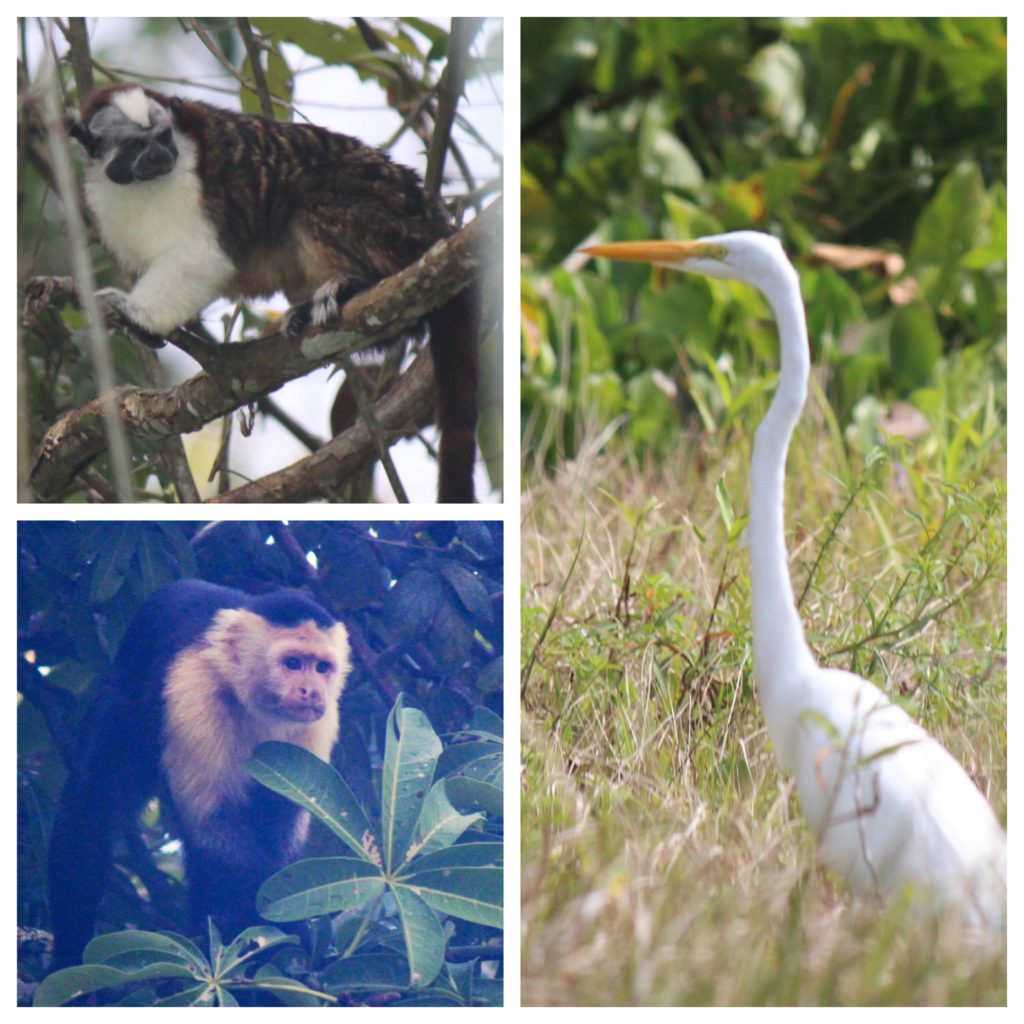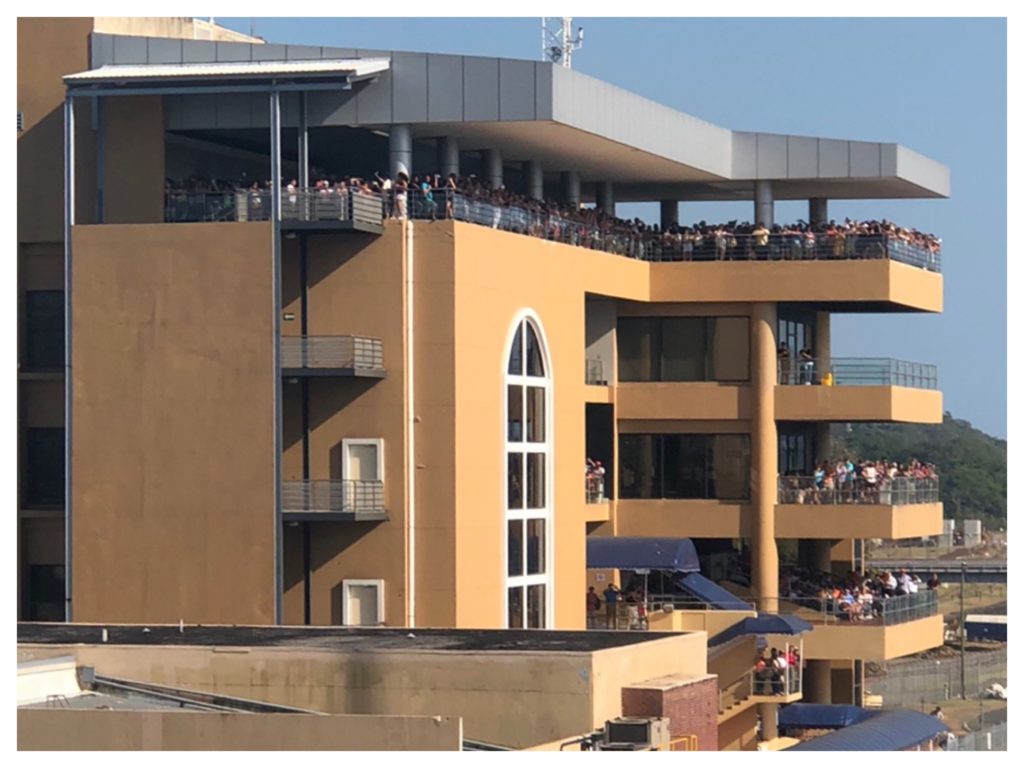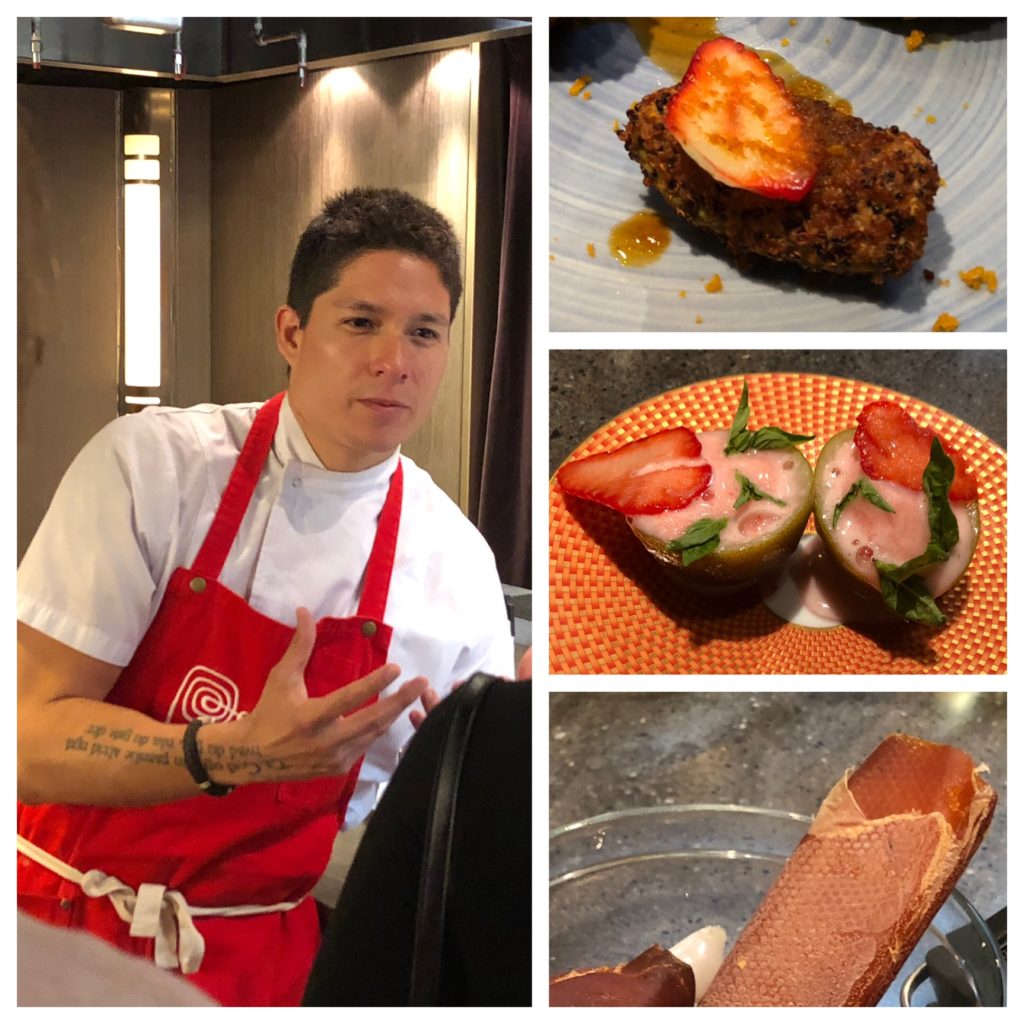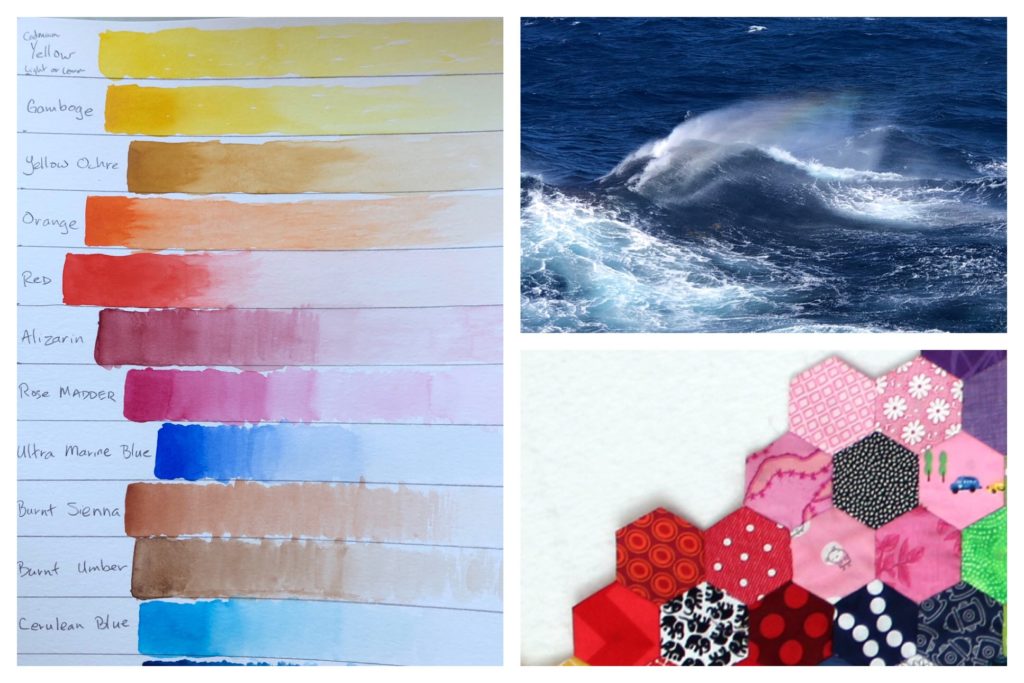After completing the transit of the Panama Canal on Day 6, we anchored last night in Panama Bay at Fuerte Amador.
Today we went on an excursion entitled “Monkey Watch & Lake Gatun Cruise”. We took a tender from the ship to the bus which drove us to a small marina just off of the canal where we boarded a small high speed boat. We spent the next 2-3 hours touring the inlets/islands of Lake Gatun looking for monkeys and other wildlife.
Lake Gatun is a huge man made lake. It’s was created during the building of the Panama Canal by damming the Chagres River. Apparently this River was well known for an abundance of crocodiles and caimans. So it was no great surprise that one of the first animals we saw was a crocodile! Our guide told us to make sure we keep our hands out of the water. Everyone thought that was a good idea.

Next we visited the monkey locations. We saw and heard some Howler monkeys but they were too well hidden to get any good pictures.
The most brilliantly colored monkeys we saw were the Geoffroy’s Tamarin monkeys. Our guide was able to coax one of them from the trees with a little bit of banana. The tamarin has a vibrant brown and white coat with white above it’s face. We also saw a mother and child up on a branch, but with the light behind the monkeys, they looked like a dark blob in our photos.
At our next stop there were Capuchin, or white-faced, monkeys. They were the smallest of the ones we saw and the most friendly. Our guide tried to coax one to the boat with a bit of banana. However he wasn’t satisfied with just a bit. He jumped onto the boat, grabbed the whole banana and ran with it. To add insult to injury, he sat on a branch near the boat and turned his back to us while they ate. I guess he was camera shy.
We also saw a lot of birds: white cranes, blue cranes, kites, and black vultures.

All in all it was a good day for viewing animals.
A couple of side notes, as we drove to the marina, we passed by the prison where the dictator Noriega was held. We also passed by the new canal Visitors Center. Hundreds of tourist and Panamanians come here to watch ships pass through the Mira Flores locks on their way to the Pacific.

It takes about 12 hours to transit the Panama Canal that involves moving through three sets of locks and a trip across Gatun Lake. We were in place for the first set of locks at 6:30 a.m., but the real motivation to get out of bed were the “Panama rolls” served on deck.
We arrived on deck in time to pass under the Bridge of the Americas which will allow traffic to cross over the canal rather than waiting to cross between ships. This bridge was not finished last year when we passed through the canal. However, even though the bridge is finished, it is still not open to traffic because the roads leading to the bridge are not yet complete.

The Gatun Locks raise the ship from sea level to the level of Gatun lake. The ships are moved inside the locks by small, heavy-duty rail cars called “mules”. The ship enters the lock, doors close behind the ship, and water rushes into the lock and the ship rises 85 feet. There are two of these locks to get to the level of Gatun Lake.

Our guide emphasized that maintaining the jungle and rainforest that borders the canal is essential because immense amounts of water are needed for each ship that transits the canal.

I also thought it was interesting to compare the number of passengers out on deck to view the ship entering the locks. On our ship, many people have traveled through the canal multiple times. On the cruise ship behind us, we could see deck after deck of passengers enjoying the transit.

Later today we will pass through two other sets of locks to lower us from lake level back to sea level and the Pacific Ocean.
Today we visited one of the San Blas Islands. The are over 300 of them of which only 49 are populated. The islands are inhabited by the Guna people. These are not wealthy people. One source of their income is from the sale of their needlework called “Mola” to visiting Cruise ships.
The traditional costume of a Guna woman consists of a patterned blue cotton wrapped skirt, red and yellow headscarf, arm and leg beads, gold nose rings and earrings and the many layered and finely sewn mola panel blouse.

Molas are hand-made using a reverse appliqué technique. Several layers (usually two to seven) of different-colored cloth (usually cotton) are sewn together; the design is then formed by cutting away parts of each layer. The edges of the layers are then turned under and sewn down. Often, the stitches are nearly invisible. This is achieved by using a thread the same color as the layer being sewn, sewing blind stitches, and sewing tiny stitches. The finest molas have extremely fine stitching, made using tiny needles.

Today we spent over four hours touring the city of Santa Marta and some of its most important sites with our guide Jorge. The city is a mixture of colonial (from when the city was under Spanish rule) and republican styles of architecture. It was the first Spanish settlement in Colombia and it’s oldest surviving city (2nd oldest in South America).
Our first stop was the Gold Museum situated on the Simón Bolívar plaza. This was a small but very well designed museum displaying gold & ceramic works from the Tairona people. As you can see these were very talented goldsmiths.

Next was a visit to the city’s Cathedral. It took several years to build due to lack of funds but was finally completed when the city began taxing the local rum products. Located in the cathedral are two tombs for the great South American liberator, Simón Bolívar, neither of which contains his actual body! He was initially buried under the marble slab in the Northeast corner. However government members were appalled that he was buried in such an out of the way place in the church and had the body moved to the front of the altar under a huge brass plaque. Two years later the family moved the body to Caracas, Venezuela, where it lies today.

Also located here are the ashes of Rodrigo de Bastidas who founded the city in 1525.

We left the Cathedral and drove to the “Quinta de San Pedro Alejandrino” which was a large rum and coffee plantation at one time. We visited the buildings where rum was made, but it’s real claim to fame is the fact that Simón Bolívar died here of tuberculosis in 1830. The bed where he died is on display as well as the table in the bakery where his autopsy occurred.

Remember the building where the gold museum was located? Simón Bolívar’s body laid in state in that building for a couple of days before being taken to the Cathedral for the funeral.
Our final stop was at a local hotel for a folkloric dance show. Being a hot and humid day we were served a cold beer “Club Columbia”. It was especially appreciated. After the show, it was back to the ship for a cool shower and a rest.

The next couple of days will involve getting into the groove of activities on sea days. Paul and I usually have breakfast together then head off to enjoy different events. We also include some walking exercise during the day (3.5 laps of the ship = 1 mile) Today’s walk was challenging due to high winds blowing the ocean spray from the ship back in your face. Fortunately the ship is big enough to finish your exercise inside.
My events today included several lectures and my first cooking presentation of the cruise by Peruvian Chef Palmiro Ocampo. Beside running his own restaurant in Lima, he devotes a lot of time teaching soup kitchen cooks in rural Peru how to improve the nutritional value of their food. He also teaches them better ways use their local ingredients to minimize food waste in their preparation steps.
Today’s presentation showed two recipes: Crunchy Avocado with Broth & Botarga, and, Preserved Lemons. They both look and smelled great but due to health regulations we weren’t allowed to sample them.

After the presentation we had lunch across the hall at the Pinnacle restaurant. On the menu were Crab Cakes, Beef Fillet with Blue Cheese & Scalloped Potatoes, and, Fresh Berries for desert. Great food!

Paul is attending watercolor classes. The class starts from scratch learning about colors and moisture control which is great since Paul has barely held a brush since our last cruise. Paul also brought a hand-stitching quilting project, “Hexies”, which is short for English paper piecing. He’s already met several people doing the same sort of project, so he’ll learn how to do it as we go. It is a slow project, but he has months to work on it.

Later that evening we met with our friends from the 2017 cruise for dinner.